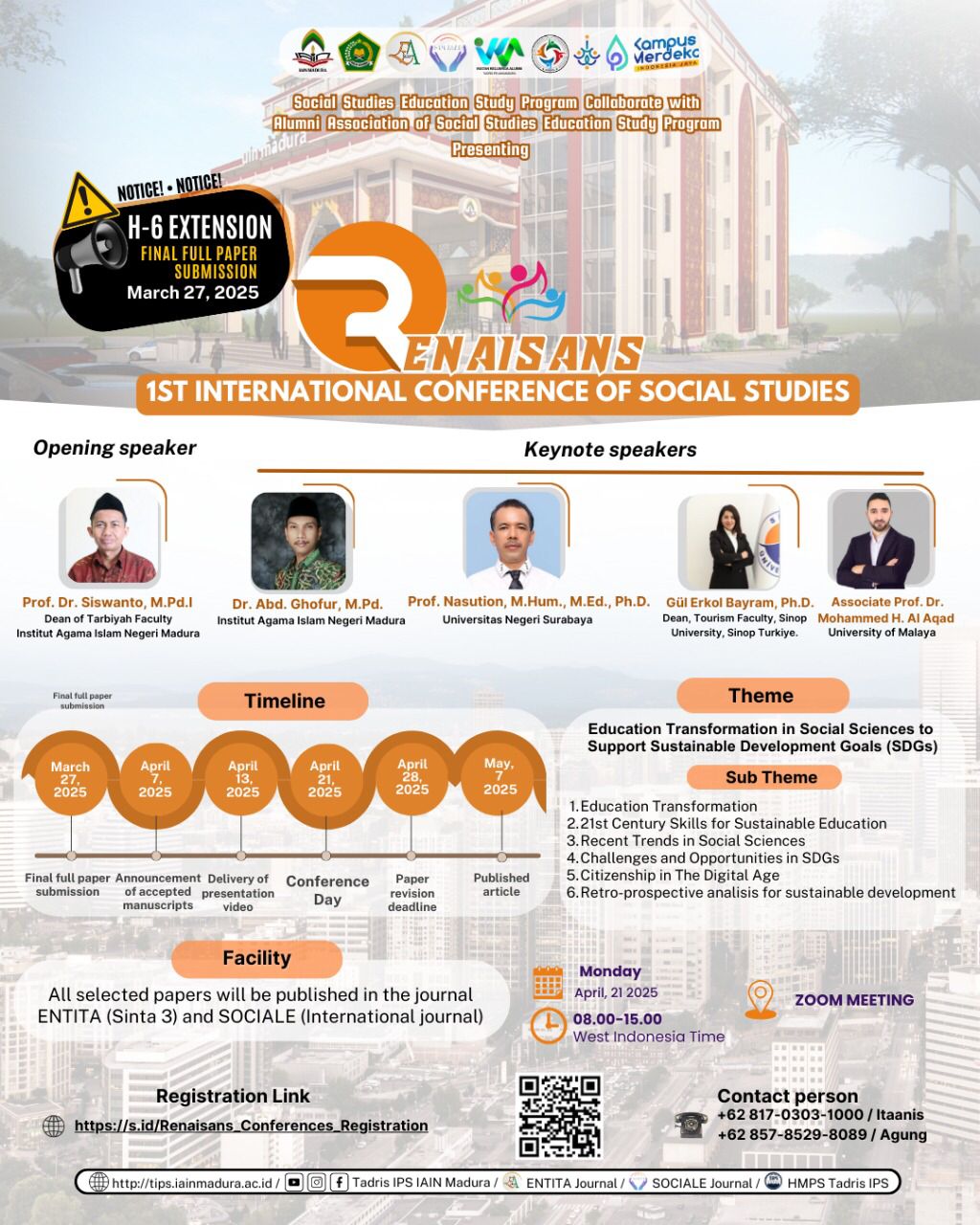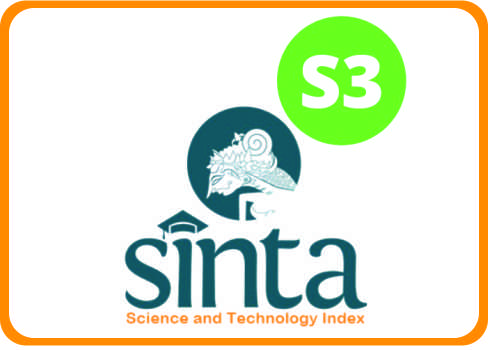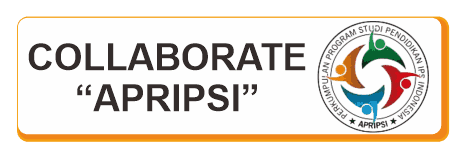Processing Leaf Waste Into Compost Using Rice Water And Em4 Fermentation Activators
 Abstract views: 5
,
Abstract views: 5
,
 PDF downloads: 4
PDF downloads: 4
Abstract
The purpose of this study was to see the difference in the results of processing leaf waste into compost using different activators between rice water fermentation and EM4. Leaf waste is a concern and problem at Mambaul Ulum Bata-bata Boarding School. The amount of waste that is not processed affects the condition of environmental sustainability. Given the lack of processing of leaf waste that exists to date, it is very important to improve leaf waste management techniques so that the composting process can turn it into a valuable product. This research uses qualitative methods and primary data collection by observation and secondary data by literature study. This research is also experimental to determine the physical changes of compost with the addition of rice water fermentation activator and EM4 liquid. In the results of samples using rice water fermentation activator, the results were obtained with temperatures ranging from 29 - 31 degrees Celsius, dry humidity conditions and pH ranging from 5.7 - 6 which means that some compost is still acidic because it has a pH less than 6. The physical properties of the soil have the characteristics of smelling soil, black in colour, and fungus has spread. As for the results of the second sample using EM4 activator with temperature results ranging from 30 - 32 degrees Celsius, dry humidity conditions and pH ranging from 6.9 - 7.3 which means the compost has a normal pH. The physical properties of the soil have the characteristics of smelling dry leaves, brownish in colour, and white spots appear and begin to spread
Downloads
References
Harada, Y., K. Haga, Tosada and M. Koshino. (1993). Quality of Compost Produced from Animal Waste, Japan Agric, Research Quarterly, 26: 238-246.
Dinata, H. . & H. R. (2023). Pengolahan Limbah Organik Untuk Pembuatan Pupuk Kompos Dan Pupuk Organik Cair Di Desa Dena Kecamatan Madapangga Kabupaten Bima Nusa Tenggara Barat. Jurnal Pengabdian, 5(1), 9–13.
Habib, J. S., Yuki, N. Z., Zahrah, S. T., & Rusmawati, L. (2022). Pengolahan Sampah Daun Menjadi Pupuk Kompos Dengan Aktivator Nasi Aking Sebagai Pengganti EM4. Lomba Karya Tulis Ilmiah, 4(1), 203–218.
Handayani, S., Emilda, E., Nabilah, N., Syifa, A., & Nadhisa, N. (2023). Pelatihan Pembuatan Pupuk Kompos Berbahan Daun-Daun Kering Bagi Siswa SMP Negeri 17 Palembang. AKM: Aksi Kepada Masyarakat, 4(1), 219–224. https://doi.org/10.36908/akm.v4i1.754
Jannah, N. K., & Rahayu, Y. S. (2018). Penggunaan Pupuk Cair Berbahan Baku Limbah Air Cucian Beras dengan Penambahan Serbuk Cangkang Telur Terhadap Pertumbuhan Tanaman Sawi Hijau ( Brassica juncea ) Utilization of fertilizer of rice water egg shell with addition of powder on the growth green p. Universitas Negeri Surabaya, 7(2015), 15–18.
Jupri, A., Zulfiani, R., Fathurrahman, M., Sujendra, I. B. A., & Husaini, P. (2023). Pemanfaatan Limbah Rumah Tangga Menjadi Pupuk Cair dengan Proses Fermentasi Menggunakan EM4 di Desa Paok Pampang Kecamatan Sukamulia Lombok Timur. Jurnal Pengabdian Magister Pendidikan IPA, 6(4), 1272–1276.
Kadek, I., Saputra, D., Kirom, M. R., & Suhendi, A. (2021). Pengaruh Penambahan EM4 Pada Substrat Nasi Basi Terhadap Potensi Produksi Gas Metana Pada Reaktor Biogas Sederhana. E-Proceeding of Engineering, 8(1), 389–397.
Khasanah, F. N., & Murdowo, S. (2021). Kiat Sukses Membuat Pupuk Organik Cair Dari Hasil Pengolahan Sampah Daun Kering Sampai Proses Pemasaran Digital. Angewandte Chemie International Edition, 6(11), 951–952., 2013–2015.
Meriatna, M., Suryati, S., & Fahri, A. (2019). Pengaruh Waktu Fermentasi dan Volume Bio Aktivator EM4 (Effective Microorganisme) pada Pembuatan Pupuk Organik Cair (POC) dari Limbah Buah-Buahan. Jurnal Teknologi Kimia Unimal, 7(1), 13. https://doi.org/10.29103/jtku.v7i1.1172
Rahmadina, R., & Tambunan, E. P. S. (2017). Pemanfaatan Limbah Cangkang Telur, Kulit Bawang Dan Daun Kering Melalui Proses Sains Dan Teknologi Sebagai Alternatif Penghasil Produk Yang Ramah Lingkungan. KLOROFIL: Jurnal Ilmu Biologi Dan Terapan, 1(1), 48. https://doi.org/10.30821/kfl:jibt.v1i1.1575
Sari, A. S., Nurlita, F., Bharata, W., Wahyuni Arsyad, A., & Hijrah, L. (2024). Pengolahan Limbah Organik Untuk Pembuatan Pupuk Kompos Di Desa Kersik Kecamatan Marangkayu. Jurnal Pengabdian Masyarakat Polmanbabel, 4(01), 87–95. https://doi.org/10.33504/dulang.v4i01.331
Suwerda. (2011). Bank Sampah. Yogyakarta: Pustaka Rihama Taswandi.
Suryati, T. (2009). Bijak & Cerdas Mengolah Sampah 1st ed. M. T. Nixon, ed., Jakarta: PT Agromedia Pustaka
Copyright (c) 2025 Entita: Jurnal Pendidikan Ilmu Pengetahuan Sosial dan Ilmu-Ilmu Sosial

This work is licensed under a Creative Commons Attribution-NonCommercial 4.0 International License.
ENTITA: Jurnal Pendidikan Ilmu Pengetahuan Sosial dan Ilmu-Ilmu Sosial operates an Open Access policy under a Creative Commons Non-Commercial 4.0 International license. Authors who publish with this journal agree to the following terms:
- The copyright of the received article once accepted for publication shall be assigned to the journal as the publisher with licensed under a

- Journal is able to enter into separate, additional contractual arrangements for the non-exclusive distribution of the journal's published version of the work (e.g., post it to an institutional repository or publish it in a book), with an acknowledgement of its initial publication in this journal.
- Journal is permitted and encouraged to post their work online (e.g., in institutional repositories or on their website) prior to and during the submission process, as it can lead to productive exchanges, as well as earlier and greater citation of published work (see The Effect of Open Access).
- Here is Copyright Transfer Form that author can download and send to OJS during submission.

















